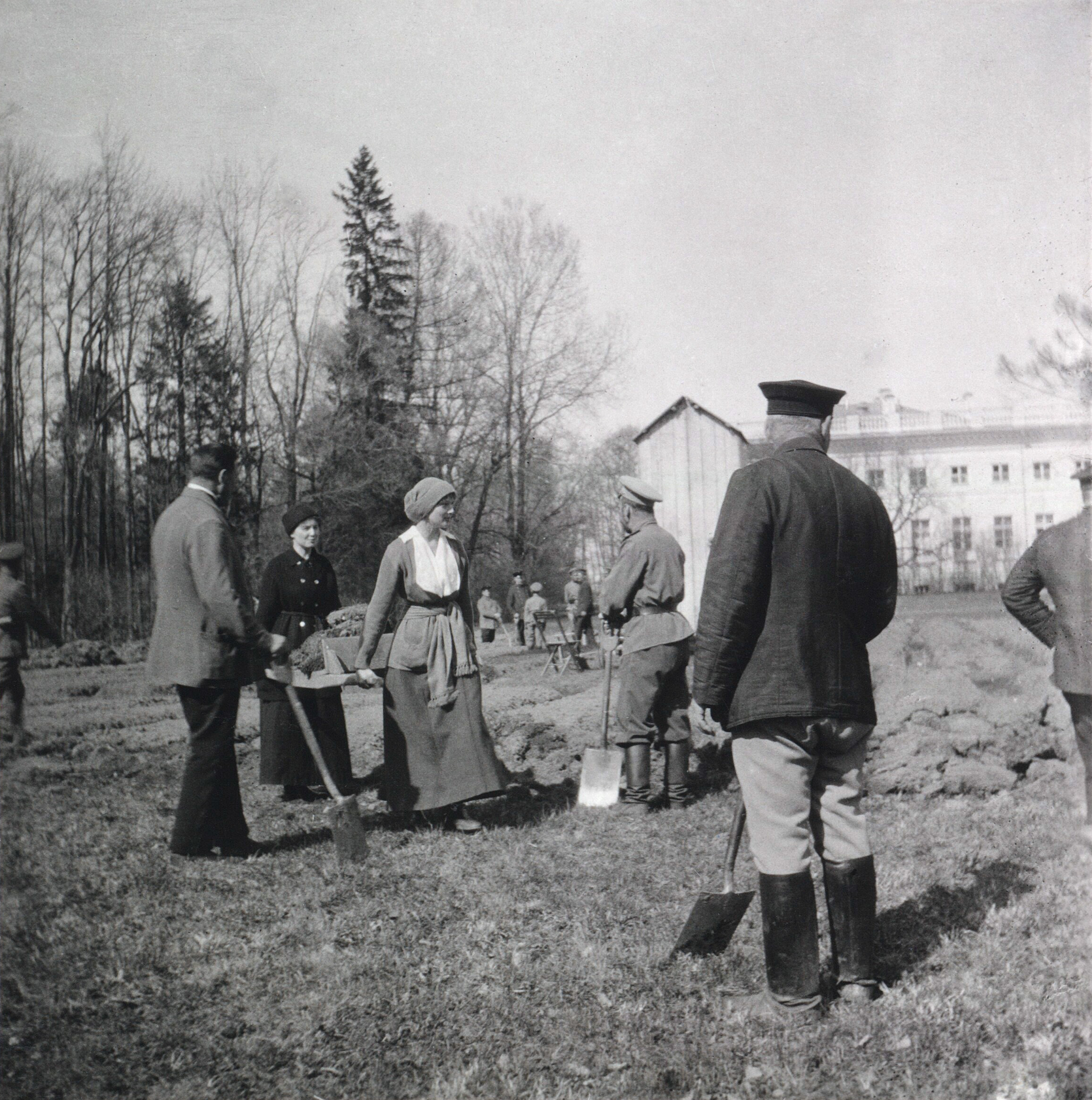|
Olga Ulyanova
Olga Dmitrievna Ulyanova (; 4 March 1922 – 25 March 2011) was a Russian chemist, physicist, and writer. The niece of Vladimir Lenin, she was one of his last-known living relatives before her death. Ulyanova was a supporter of Lenin's legacy, writing extensively about her uncle and family. She was awarded the Order of the Red Banner of Labour by the Soviet Union for her writing. Ulyanova actively campaigned for Lenin's body to stay in Lenin's Mausoleum during discussions of reburying it outside of the Red Square. While supportive of maintaining Lenin's legacy, she told European press that it was a mistake to make him into an icon. Biography Olga Ulyanova was born in Moscow on 4 March 1922, the daughter of the Russian physician and revolutionary Dmitry Ilyich Ulyanov and Antonia Ivanovna Neshcheretova. She had a brother, Viktor. Ulyanova's father was the brother of Vladimir Lenin, Aleksandr Ulyanov, Anna Ulyanova, Olga Ilyinichna Ulyanova, and Maria Ilyinichna Ulyanova. Her ... [...More Info...] [...Related Items...] OR: [Wikipedia] [Google] [Baidu] |
Vladimir Lenin
Vladimir Ilyich Ulyanov ( 187021 January 1924), better known as Vladimir Lenin, was a Russian revolutionary, politician and political theorist. He was the first head of government of Soviet Russia from 1917 until Death and state funeral of Vladimir Lenin, his death in 1924, and of the Soviet Union from 1922 until his death. As the founder and leader of the Bolsheviks, Lenin led the October Revolution which established the world's first socialist state. His government won the Russian Civil War and created a one-party state under the Communist Party of the Soviet Union, Communist Party. Ideologically a Marxist, his developments to the ideology are called Leninism. Born into a middle-class family in Simbirsk in the Russian Empire, Lenin embraced revolutionary socialist politics after Aleksandr Ulyanov, his brother was executed in 1887 for plotting to assassinate Alexander III of Russia, the tsar. He was expelled from Kazan Imperial University for participating in student prote ... [...More Info...] [...Related Items...] OR: [Wikipedia] [Google] [Baidu] |
Russian Nobility
The Russian nobility or ''dvoryanstvo'' () arose in the Middle Ages. In 1914, it consisted of approximately 1,900,000 members, out of a total population of 138,200,000. Up until the February Revolution of 1917, the Russian noble estates staffed most of the Russian government and possessed a self-governing body, the Assembly of the Nobility. The Russian language, Russian word for nobility, ''dvoryanstvo'' derives from Slavonic ''dvor'' (двор), meaning the noble court, court of a prince or duke (''knyaz''), and later, of the tsar or emperor. Here, ''dvor'' originally referred to servants at the estate of an aristocrat. In the late 16th and early 17th centuries, the system of hierarchy was a system of seniority known as ''mestnichestvo''. The word ''dvoryane'' described the highest rank of gentry, who performed duties at the royal court, lived in it (''Moskovskie zhiltsy'', "Moscow dwellers"), or were candidates to it, as for many boyar scions (''dvorovye deti boyarskie'', ''v ... [...More Info...] [...Related Items...] OR: [Wikipedia] [Google] [Baidu] |
21st-century Russian Physicists
File:1st century collage.png, From top left, clockwise: Jesus is crucified by Roman authorities in Judaea (17th century painting). Four different men (Galba, Otho, Vitellius, and Vespasian) claim the title of Emperor within the span of a year; The Great Fire of Rome (18th-century painting) sees the destruction of two-thirds of the city, precipitating the empire's first persecution against Christians, who are blamed for the disaster; The Roman Colosseum is built and holds its inaugural games; Roman forces besiege Jerusalem during the First Jewish–Roman War (19th-century painting); The Trưng sisters lead a rebellion against the Chinese Han dynasty (anachronistic depiction); Boudica, queen of the British Iceni leads a rebellion against Rome (19th-century statue); Knife-shaped coin of the Xin dynasty., 335px rect 30 30 737 1077 Crucifixion of Jesus rect 767 30 1815 1077 Year of the Four Emperors rect 1846 30 3223 1077 Great Fire of Rome rect 30 1108 1106 2155 Boudican revolt ... [...More Info...] [...Related Items...] OR: [Wikipedia] [Google] [Baidu] |
2011 Deaths
This is a list of lists of deaths of notable people, organized by year. New deaths articles are added to their respective month (e.g., Deaths in ) and then linked below. 2025 2024 2023 2022 2021 2020 2019 2018 2017 2016 2015 2014 2013 2012 2011 2010 2009 2008 2007 2006 2005 2004 2003 2002 2001 2000 1999 1998 1997 1996 1995 1994 1993 1992 1991 1990 1989 1988 1987 1986 Earlier years ''Deaths in years earlier than this can usually be found in the main articles of the years.'' See also * Lists of deaths by day * Deaths by year (category) {{DEFAULTSORT:deaths by year ... [...More Info...] [...Related Items...] OR: [Wikipedia] [Google] [Baidu] |
1922 Births
Events January * January 7 – Dáil Éireann (Irish Republic), Dáil Éireann, the parliament of the Irish Republic, ratifies the Anglo-Irish Treaty by 64–57 votes. * January 10 – Arthur Griffith is elected President of Dáil Éireann, the day after Éamon de Valera resigns. * January 11 – The first successful insulin treatment of diabetes is made, by Frederick Banting in Toronto. * January 15 – Michael Collins (Irish leader), Michael Collins becomes Chairman of the Provisional Government of the Irish Free State. * January 26 – Italian forces occupy Misrata, Italian Libya, Libya; the Pacification of Libya, reconquest of Libya begins. February * February 6 ** Pope Pius XI (Achille Ratti) succeeds Pope Benedict XV, to become the 259th pope. ** The Washington Naval Treaty, Five Power Naval Disarmament Treaty is signed between the United States, United Kingdom, Empire of Japan, Japan, French Third Republic, France and Kingdom of Italy, Italy. Japan returns some ... [...More Info...] [...Related Items...] OR: [Wikipedia] [Google] [Baidu] |
Ulyanovsk Oblast
Ulyanovsk Oblast () is a federal subjects of Russia, federal subject of Russia (an oblast). It is located in the Volga Federal District. Its administrative center is the types of inhabited localities in Russia, city of Ulyanovsk. It has a population of 1,292,799 (Russian Census (2010), 2010 Census). Geography Ulyanovsk Oblast borders with Chuvashia (N), Tatarstan (NE), Samara Oblast (E), Saratov Oblast (S), Penza Oblast (W), and Mordovia (NW). It is located on the northern edge of Central Steppes. A quarter of its territory is covered with deciduous forests; the rest is covered with steppes and meadows. The oblast is divided in half by the Volga River. Hilly areas to the west of the Volga are known as Volga Upland (elevations up to 358 m (1,175 ft) ). Eastern part of the oblast is mostly flat. The water table occupies about 6% of territory. Ulyanovsk Oblast is categorized as a dfb, (warm-summer humid continental), on the köppen climate classification, köppen clas ... [...More Info...] [...Related Items...] OR: [Wikipedia] [Google] [Baidu] |
Execution Of The Romanov Family
The abdicated Russian Imperial Romanov family (Tsar Nicholas II of Russia, his wife Alexandra Feodorovna (Alix of Hesse), Alexandra Feodorovna, and their five children: Grand Duchess Olga Nikolaevna of Russia, Olga, Grand Duchess Tatiana Nikolaevna of Russia, Tatiana, Grand Duchess Maria Nikolaevna of Russia, Maria, Grand Duchess Anastasia Nikolaevna of Russia, Anastasia, and Alexei Nikolaevich, Tsarevich of Russia, Alexei) were shot and bayoneted to death by Bolshevik revolutionaries under Yakov Yurovsky on the orders of the Ural Regional Soviet in Yekaterinburg on the night of 16–17 July 1918. Also murdered that night were members of the imperial entourage who had accompanied them: court physician Eugene Botkin; lady-in-waiting Anna Demidova; footman Alexei Trupp; and head cook Ivan Kharitonov. The bodies were taken to the Koptyaki forest, where they were stripped, mutilated with grenades and acid to prevent identification, and buried.Rappaport, p. 198. Following the Februar ... [...More Info...] [...Related Items...] OR: [Wikipedia] [Google] [Baidu] |
Panorama (magazine)
is a weekly news magazine based in the city of Milan, Italy. History and overview was founded in Milan in 1939. The magazine was temporarily closed by the Fascist rule in December 1940 due to the publication of the translated texts by Ada Prospero. It was relaunched by Italian publisher Arnoldo Mondadori in cooperation with the American Time Inc. group in Milan in October 1962. The magazine came out biweekly in the initial period. Ownership The magazine is owned and published by Arnoldo Mondadori Editore, the largest Italian publishing house. The company is controlled by Fininvest, a financial holding company controlled by the family of Silvio Berlusconi, a former Prime Minister of Italy. Although American group Time-Life company also owned the magazine, later it left the magazine due to low circulation levels. Circulation had a circulation of 350,429 copies in 1984. The circulation of the magazine was 530,031 copies between September 1993 and August 1994. In 2000 it ... [...More Info...] [...Related Items...] OR: [Wikipedia] [Google] [Baidu] |
Interfax
Interfax () is a Russian news agency. The agency is owned by Interfax News Agency joint-stock company and is headquartered in Moscow. History As the first non-governmental channel of political and economic information about the USSR, Interfax was formed in September 1989, during Mikhail Gorbachev’s ''perestroika and glasnost'' period, by Mikhail Komissar and his colleagues from international broadcasting station ' Radio Moscow', a part of Soviet Gosteleradio system. Interfax originally used fax machines for text transmission, hence the company name.Михаил Комиссар: задача «Интерфакса» — быть номером один'. — TV-channel ' Russia-24', 9 September 2009. By 1990, Interfax had 100 subscribers and the agency quickly began to attract the attention of conservatives within the government, who attempted to shut down the agency. This saw the agency gain prominence in major western media, a position strengthened by its coverage of ... [...More Info...] [...Related Items...] OR: [Wikipedia] [Google] [Baidu] |
Volkovo Cemetery
The Volkovo Cemetery (also Volkovskoe) ( or Во́лково кла́дбище) is one of the largest and oldest non- Orthodox cemeteries in Saint Petersburg, Russia. Until the early 20th century it was one of the main burial grounds for Lutheran Germans in Russia. It is estimated that over 100,000 people have been buried at this cemetery since 1773. Origins 1770–1773 Between late 1771 and 1772, Catherine the Great, empress of the Russian Empire, issued an edict which decreed that, from that point on, any person who died (regardless of social standing or class origins) no longer had the right to be buried within church crypts or adjacent churchyards. New cemeteries had to be built across the entire Russian Empire and from then on they all had to be located outside city limits. One of the main motivations behind these measures was overcrowding in church crypts and graveyards. However, the true deciding factor which led to the new laws being enforced on such a mass scale across ... [...More Info...] [...Related Items...] OR: [Wikipedia] [Google] [Baidu] |





